Main menu
Common skin conditions

NEWS
Join DermNet PRO
Read more
Quick links
The impact of climate change on skin — extra information
The impact of climate change on skin
Author: Dr Kirsten Due, General Practitioner, South Australia, Australia. Reviewed by Greg Miles, former Kakadu Chief Ranger and Park Naturalist, Northern Territory, Australia. DermNet Editor in Chief: Adjunct A/Prof Amanda Oakley, Dermatologist, Hamilton, New Zealand. Copy edited by Maria McGivern/Gus Mitchell. December 2017.
Introduction
Demographics
Cutaneous infection associated with a warmer climate
Vector-borne disease
Waterborne disease
Food-borne disease
Thermal injury
Exposure to ultraviolet radiation
Inflammatory skin diseases
Barriers to long-term projections
What is climate change?
Climate change is a lasting alteration in patterns of weather caused by factors such as oceanic circulation, variations in solar radiation, plate tectonics, volcanic eruptions, and human factors. These factors may impact global or local temperature, humidity, rainfall, and weather extremes.
Colloquial use of the term 'climate change' specifically refers to environmental changes caused by human factors, including global warming due to the production of gases that may trap heat in the atmosphere — carbon dioxide (CO2), methane (CH4), nitrous oxide (N2O) and fluorinated gases.
Climate change has been called a 'risk–multiplier' rather than a risk–generator or risk factor, due to it worsening pre-existing climate-related health concerns.
Climate influences a wide range of systemic diseases and conditions. Heat exposure — a combination of air temperature, humidity, air movement, and heat radiation — can present an environmental hazard. The most common measures used to describe heat stress are the Wet Bulb Globe Temperature (WBGT) and Universal Thermal Climate Index (UTCI). A WBGT of 29 degrees has been shown to reduce work performance and to cause a wide variety of respiratory, cardiac and gastrointestinal diseases.
As skin is exposed to the environment, it is especially vulnerable to increased heat and humidity. In this article, we describe the effects of a warmer environment on cutaneous infections and inflammatory diseases of the skin.
Who are most vulnerable to the impact of a hotter environment?
Individuals at particularly high risk from hot conditions include:
- Infants and children
- Older people
- Pregnant women
- Outdoor workers and athletes
- Indoor workers in an environment without cooling
- Tourists or those unfamiliar with specific local heat risks
- People with chronic medical conditions (eg, renal disease and alcohol dependence)
- People with diseases that impair awareness, mobility, and behaviour (eg, Parkinson disease, dementia, and developmental delay).
- Families and nations under financial stress and unable to adjust to environmental changes
- People living in urban areas, because cities absorb, generate, and retain more heat than rural areas
- People living in homes not designed to reduce heat stress
- The socially disadvantaged (ie, those suffering from low socioeconomic status, homelessness, or social isolation).
Cutaneous infection associated with a warmer climate
Warmer conditions lead to a greater prevalence of cutaneous infections, including:
- Bacterial infections such as impetigo, cellulitis, and boils
- Skin conditions due to fungal infections such as pityriasis versicolor and tinea pedis
- Viral skin conditions.
One study showed that for every 1°C rise in average temperature, the rate of hand foot and mouth disease increased by 10% and for every 1% increase in relative humidity (under 65%) the rate increased by 6.6%.
Infections prevalent in a warm climate
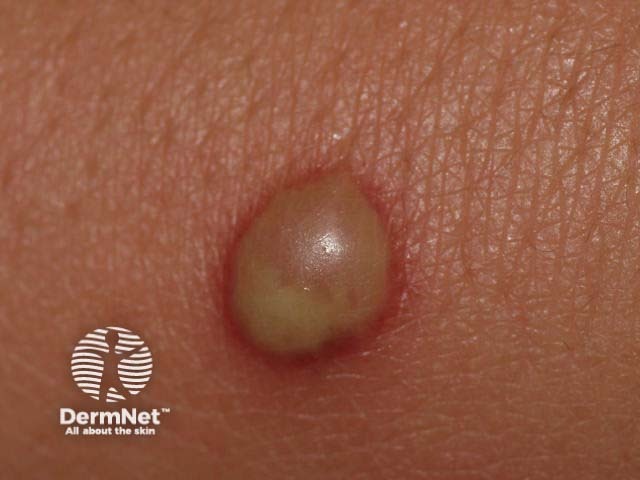
Bullous impetigo

Tinea pedis
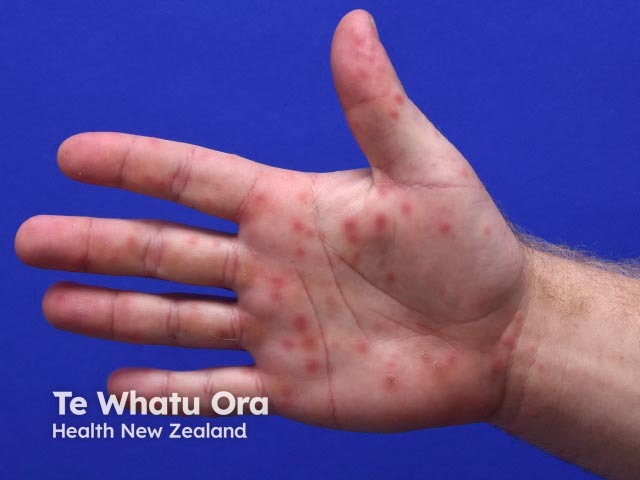
Enterovirus infection
Vector-borne disease
Mosquitoes, ticks, and fleas are vectors that carry pathogenic viruses, bacteria, and protozoa, which can be transferred from one host (eg, a mosquito) to another (eg, a person or animal). Temperature plays an important role in the spread of vectors and vector-borne disease. Warmer conditions lead to faster replication of certain viruses and vectors and increased rates of transmission.
Tick-borne infection
Tick borne infections include:
- Lyme disease (Borrelia burgdorferi)
- Spotted fever rickettsia
- Anaplasmosis/ehrlichiosis
- Babesiosis
- Tularaemia
- Powassan virus.
Mosquito-borne infection
Mosquito-borne infections include:
- Malaria
- West Nile virus
- Dengue
- Zika virus
- California serogroup viruses
- Eastern equine encephalitis
- St. Louis encephalitis.
Flea-borne infection
The incidence of plague is likely increase with a warmer climate.
Arthropod bites
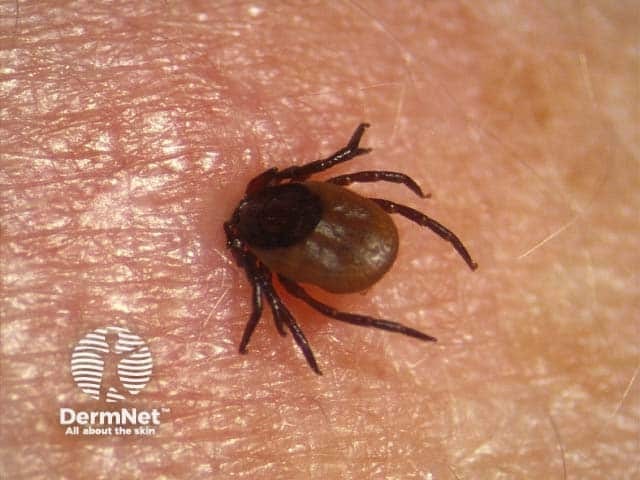
Tick bite
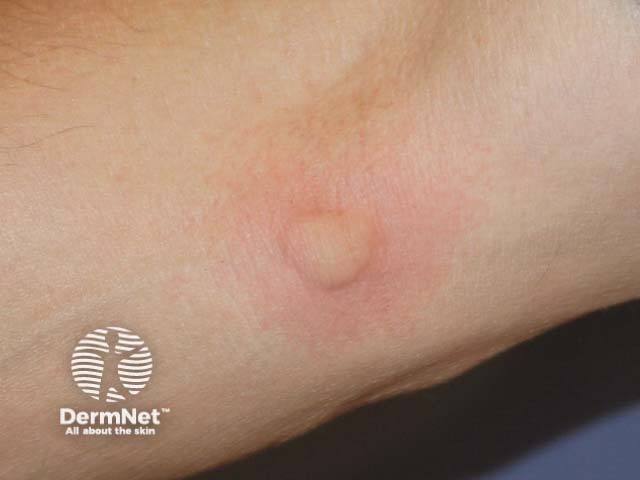
Mosquito bite

Flea bites
Waterborne disease
Heavy rainfall and flooding are predicted to increase with climate change and these often lead to outbreaks of water-borne disease. Water sources may undergo increased contamination due to flooding or become stagnant in drought. Flooding also causes disease to spread as people move en masse to seek dry ground.
Climate factors have been identified as important in outbreaks of the following water-borne diseases:
- Bacterial infections such as infections with Escherichia coli, Campylobacter, Leptospira, typhoid fever and vibrio species
- Infections caused by parasites such as toxoplasma and cryptosporidium
- Viruses such as hepatitis A and E, norovirus, and polio
- Infection caused by helminth infestation such as schistosomiasis.
Food-borne disease
Flooding and droughts may lead to a lack of fresh water for washing and cooking, especially in resource-poor nations. The warmer waters brought about by increased temperatures can cause outbreaks of shellfish-borne disease, such as Vibrio parahaemolyticus.
Mycotoxins
Increases in temperature and humidity cause food to decay and thus increase the consumption of mycotoxins, which are metabolites of moulds. Mycotoxins may also cause disease by penetrating the skin.
- About 4.5 billion persons living in developing countries are chronically exposed to largely uncontrolled amounts of aflatoxin from Aspergillus fungus species (found in corn, peanuts, and decaying vegetation).
- Aflatoxin can cause liver disease, growth restriction in children and animals, cancer, and immunosuppression leading to vaccination failure and decreased resistance to infectious disease.
- Other mycotoxins have been associated with skin irritation and rashes.
Phycotoxins
Phycotoxins are potent natural toxins produced by some marine algae and cyanobacteria species. Outbreaks of phycotoxins or 'algal blooms' are often colloquially known as 'red tides' or 'green tides'. Seafood intended for human consumption can be contaminated by phycotoxins in massive quantities.
-
- Adverse health effects associated to phycotoxins and harmful algal blooms can occur through oral, respiratory, or dermal exposure.
- Human intoxications with phycotoxins are often misdiagnosed and therefore not reported to public health authorities.
- Several phycotoxins are neurotoxic, potentially lethal, and associated with chronic morbidity.
- Some cyanobacteria species produce phycotoxins that are dermatoxins; these include;
- Aplysiatoxins, which cause respiratory symptoms and skin irritation
- Lyngbyatoxin, which cause smooth muscle contraction and skin irritation.
- Adverse health effects associated to phycotoxins and harmful algal blooms can occur through oral, respiratory, or dermal exposure.
Algal blooms
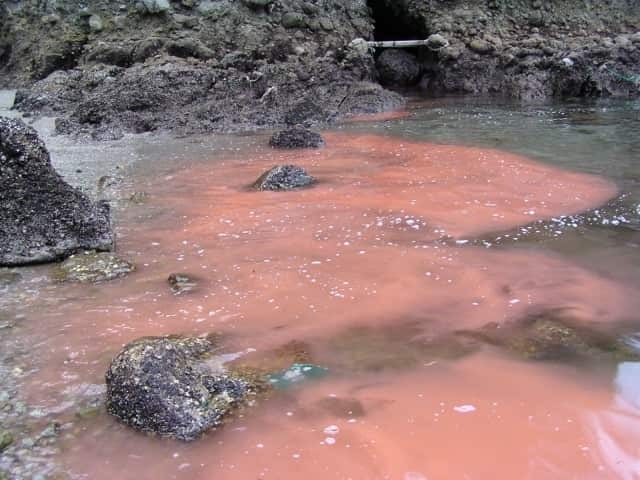
Red tide
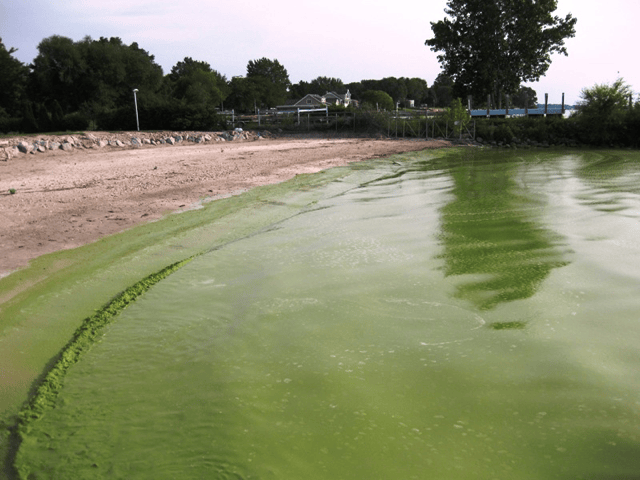
Green tide
Thermal injury
The warmer climate created by climate change is likely to lead to hot surfaces and increased numbers of bushfires and building fires. This is likely to result in increased thermal burns.
Exposure to ultraviolet radiation
Measured levels of ultraviolet radiation are largely independent of heat and humidity. However, higher outdoor temperatures in previously temperate climates may result in people wearing less clothing and spending longer periods outdoors, and thus increase exposure of the skin to UV radiation.
Likely UV damage could include:
Effects of ultraviolet radiation on the skin
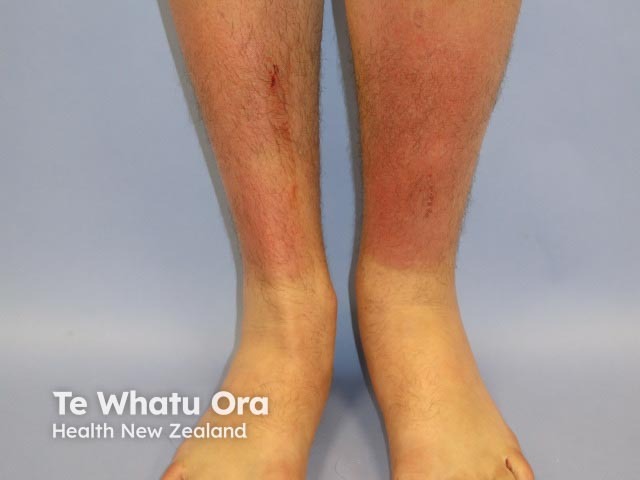
Sunburn
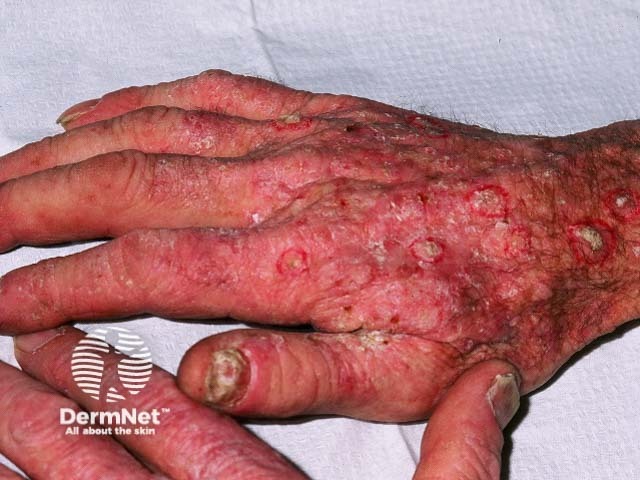
Actinic keratoses

Amelanotic nodular melanoma
Inflammatory skin diseases
- Contact dermatitis is more common and more severe when ambient temperature is higher.
- Asteatotic eczema is less common in hot, humid climates compared to dry, cool climates.
- The prevalence of atopic dermatitis may be affected by changes in aeroallergens such as the dust mite, Dermatophagoides pteronyssinus.
- Higher temperatures cause more intertrigo, especially when associated with obesity and diabetes.
- Hyperhidrosis leads to miliaria and transient acantholytic dermatosis (Grover disease).
- A hot environment may also cause flares of rosacea, cholinergic urticaria, and heat urticaria.
Inflammatory skin diseases aggravated by hot conditions
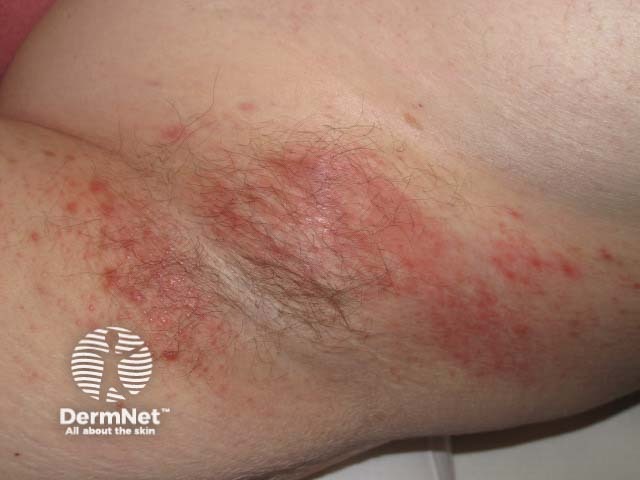
Contact dermatitis causing intertrigo
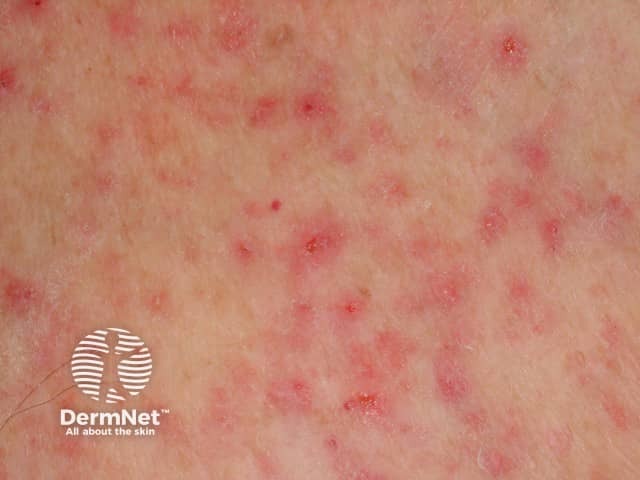
Miliaria

Cholinergic urticaria
Barriers to long-term projections about the interaction of climate factors and disease
Better early warning systems and prediction tools would enable the improved prevention and management of any disease epidemics likely to be associated with a changing climate — including those affecting the skin.
The current barriers to making accurate long-term epidemiological assessments and projections related to climate change include:
- Paucity of disease data
- Changes in health systems, socioeconomic status and land use internationally
- The prolonged timescale involved it is difficult to assess changes in climate without data of consistent quality over decades and centuries of weather events
- Diagnostic inaccuracy and changing disease case definitions
- International poverty the countries that support the poorest and most vulnerable populations are likely to suffer most from climate change.
References
- Levy, S, Patz, J, 2015. Climate change and public health. New York: Oxford University Press, 2015.
- McMichael, A. 2017. Climate change and the health of nations: famines, fevers and the fate of populations. New York: Oxford University press, 2017.
- Tyring S, Lupi O, Hengge U. Tropical Dermatology. 2nd ed. Edinburgh: Elsevier, 2017.
- Griffiths J, Roa M, Adshead F, Thorpe A (eds). The health practitioners guide to climate change: diagnosis and cure. London: Earthscan, 2009.
- National Oceanic and Atmospheric Administration (NOAA). NOAA history: a science odyssey. 2012. Available at: http://www.history.noaa.gov/index.html (accessed 12 July 2017).
- US Environmental Protection Agency. Greenhouse gas emissions. Overview of greenhouse gases. Available at: https://www.epa.gov/ghgemissions/overview-greenhouse-gases. (accessed 31 July 2017).
- Najera J, Kouznetsov R, Delacollette, C; World Health Organization. Malaria epidemics, detection and control forecasting and prevention. WHO/MAL/98.1084. Geneva: WHO, 1998.
- Spergel, JM. Role of allergy in atopic dermatitis (eczema). Available at: https://www.uptodate.com/contents/role-of-allergy-in-atopic-dermatitis-eczema (accessed 10 May 2017).
- Williams JH, Phillips TD, Jolly PE, Stiles JK, Jolly CM, Aggarwal D. Human Aflatoxicosis in developing countries: a review of toxicology, exposure, potential health consequences, and interventions. Am J Clin Nutr 2004; 80: 1106–22. DOI: 10.1093/ajcn/80.5.1106. PubMed
- Beard C, Eisen C, Barker J, et al. Vector-borne diseases. In: Crimmins A, Balbus J, Gamble JL, et al (eds). The impacts of climate change on human health in the United States: A scientific assessment. Washington: U.S. Global Change Research Program, 2016: 129–156.
- Balato N, Ayala F, Megna M, Balato A, Patruno C. Climate change and skin. J Ital Dermatol Venereol; 148: 135–46.
- Rustemeyer T, Elsner P, John SM, Maibach HI (eds). Kanerva's occupational dermatology, 2nd edn. New York: Springer, 2012.
